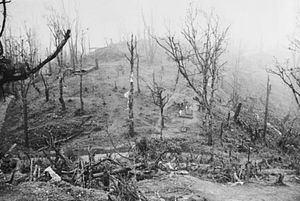Tradition and history enrich the present. The American-born British writer T.S. Eliot wrote on the significance of tradition and historical sense in shaping the current discourse and worldview in his famous essay ‘Tradition and Individual Talent.’ For Eliot, tradition is part of a living culture and an important element in shaping its future. Both a people and a person are the result of tradition and historical sense, which is crucial to understanding one’s culture and country. A nation cannot grow without teaching and understanding its history.
A new Indian documentary film, Memories of a Forgotten War, is an experiment to create awareness around a part of history that India seems to have forgotten. It revisits an important event in the past that helped shape the course of the subcontinent. The film is also an attempt to remind the nation about the important contributions of India’s northeast, a region which remains on the country’s margins despite its critical role in the struggle for Independence.
Manipur and Nagaland in the Indian northeast were important frontiers of the Second World War in what was popularly known as the Burmese front. In the rough terrain and dense forests of the region, Indian and British forces fought a battle of particular significance against the Japanese army. The intense battle, which lasted over three months, saw the defeat of the Japanese, an event that sealed the fate of Tokyo’s imperial ambitions in South Asia. Popularly known as the Battle of Kohima, it was an important event in the history of colonial India. Had the Japanese army overcome British resistance, it would have delivered a huge blow to London’s hold on India. But Kohima proved to be Japan’s Stalingrad. Just as Germany lost its momentum after its defeat on the Volga in 1943, Kohima decisively ended the expansion of Japan’s offensive in South Asia.
Not many in India are aware of this significant battle. The documentary seeks to tell the tales of valor of those young soldiers and the locals who fought in and witnessed those battles, thereby trying to bring into the mainstream an important historical narrative that the country is largely ignorant of.
“We decided to make the film for two important reasons,” says Subimal Bhattacharjee, the producer of the documentary. “First, it is an important part of history of the Northeastern India that needed to be investigated at from a humanistic point of view before it fades away. Second, I feel strongly that the historical narrative has the power to connect the North East with mainstream India very strongly,” says Bhattacharjee, a native of the region.
The far eastern part of India is linked through a narrow strip of land, called the Siliguri Corridor or the “Chicken’s Neck.” Ethnic and cultural differences set the region apart from the rest of India. The popular history taught in schools and universities is largely silent on the contribution of the region in the nation-building process. This lack of historical inclusion comes in the way of Indians on the western side of the Siliguri corridor developing an emotional connection with the area.
“Memories of Forgotten War is aimed at reaching out to the Northeastern people and telling them that we all are one and have the same historical consciousness,” says Utpal Borpujari, the director of the film. Assamese by birth, the young director has visited all the survivors of the Battle of Kohima and recorded their memories. In the film, the journey between past and present has been done in such a way that it endows history with deep present-day relevance.
The film is the first of its kind on an important event in modern Indian history. Both the director and the producer of the film hail from that region. They are informed by their acute consciousness of history and strongly feel that the Indian northeast remains very much unknown to many Indians. The film tries to address the alienation of their region. They believe that tradition and history are important in shaping our present discourse and can create a strong bond between the people of the Indian northeast and the rest of the country.

































